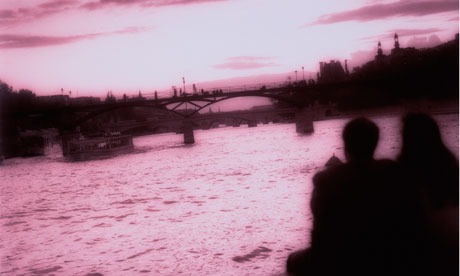
This novel is an elegant vigil – a long night's journey into day. A wife, Nina, sits with her husband, Philip, who has died of a heart attack. She waits with his dead body, drinks her way through a bottle of wine and remembers. The book itself can be agreeably knocked back in a couple of hours but leaves one sober. Nina's reminiscences are not as reproachful as the book's title would imply, but it is not until page 161 that she gets round to crying: "Tears well up in her eyes." The atmosphere throughout is dry: emotions are not Lily Tuck's thing, she does not know what to do with them as raw materials. What she is trying here is, in its way, more ambitious.
Tuck is an American novelist (a winner of the US's National Book Award) and Philip and Nina are American too. But Nina's memories incline towards Europe – which lends the narrative its wistful, translated, slightly precious feel. Nina is a painter and Philip a maths professor. They met in Paris and spent many summers in France (her memories sometimes resemble shuffled holiday snaps). What Tuck is attempting through Nina – the big thing – is to anatomise a marriage in the solitary limbo of a single night. All marriages are a mystery from the outside but she shows that they can be mysterious from the inside too. Nina has had experiences she never shared with Philip: she was raped; she had an abortion; she had a summer affair. She felt becalmed in her own life. She went to consult a tiresome therapist. There were other more inconsequential, lightweight secrets too such as the expensive purchase of an Italian leather handbag.
It is easy to see why Philip might not be the ideal husband: their relationship is an ongoing maths lesson. But Tuck is intent on stirring mathematics into her narrative: Zeno's paradox, probability theory and pi. In a light way, the book is about what happens when art marries science but this is too contrived to be a complete success.
When Nina paints a nude portrait of Philip, he comments: "I read somewhere that art is about navigating the space between what you know and what you see." His chirpy intellectual curiosity is no substitute for emotional intelligence. And there is something fey about Nina's highlighting of her favourite words: spindrift, chou‑fleur and malaise (the francophile in her asserts itself). At least she avoids trying to put them in the same sentence.
The one emotion persuasively touched on here is jealousy – as a means of keeping sexual interest alive. There is a jolly moment in which Nina finds herself jealous of "Isabell" only to discover that it is the name of her husband's computer software. But the overarching aim is serious: to investigate the nature of time and our habit of giving the present the slip. A beautiful, cautionary quotation from Pascal launches the book: "We never keep to the present. We recall the past; we anticipate the future as if we found it too slow in coming and were trying to hurry it up, or we recall the past as if to stay its too rapid flight. We are so unwise that we wander about in times that do not belong to us…"
In the light of this, there is something uncomfortable about Tuck's use of the historic present throughout. It collapses time – it is a bit of a cheat. But it is perhaps appropriate for a poised, readable, immediate novel that is never, even when it sets out to be, elegiac.

